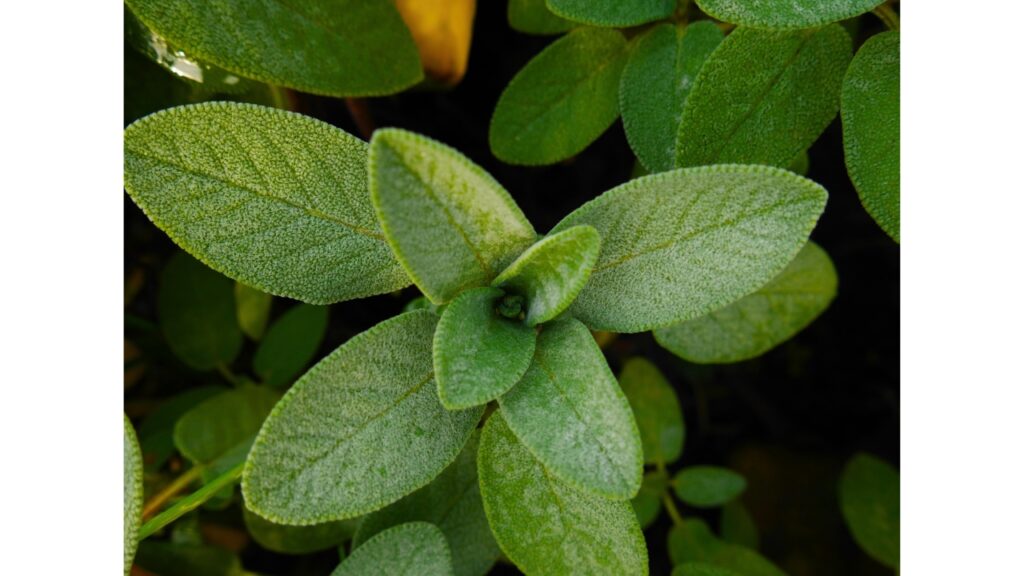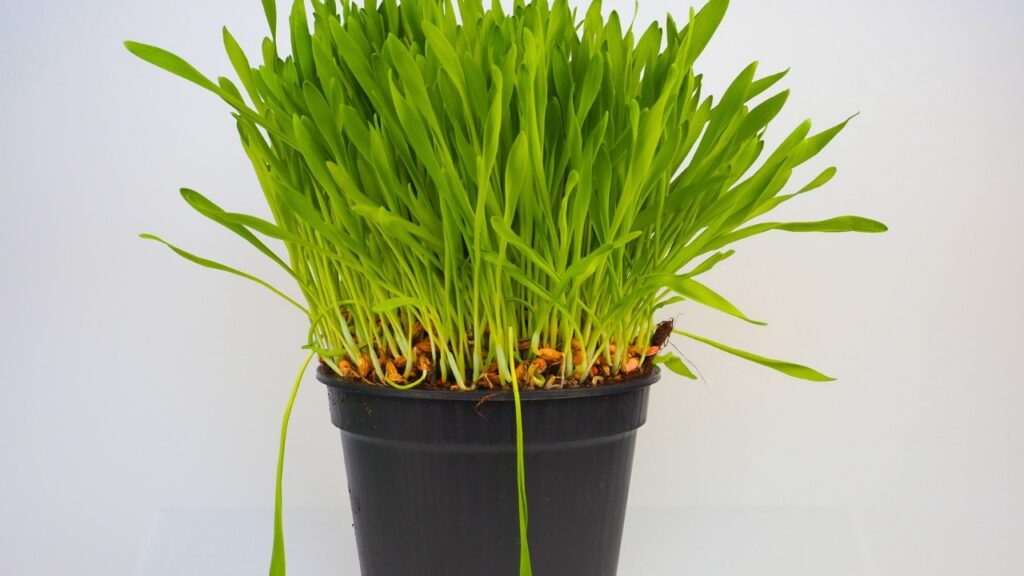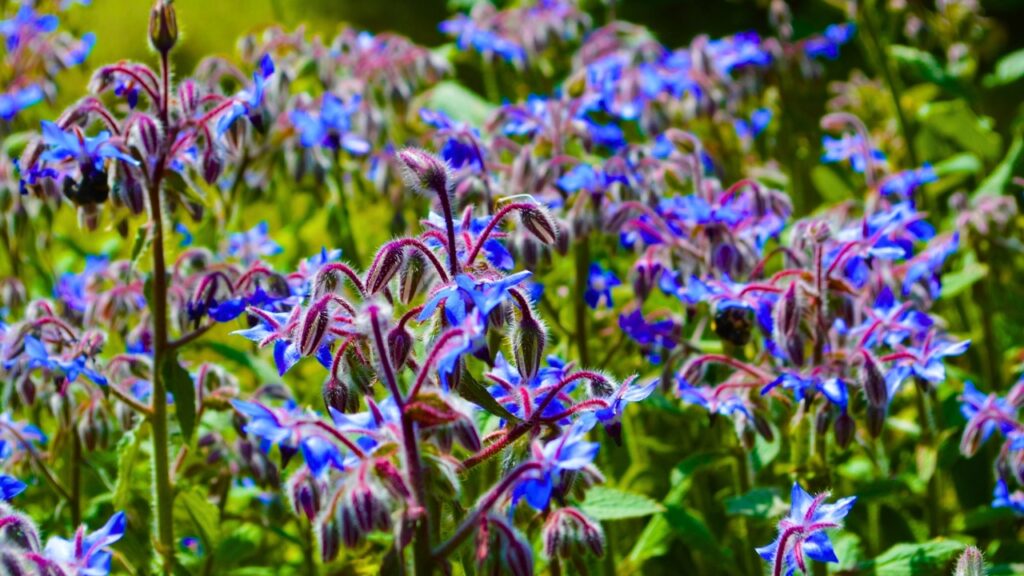An excellent approach for novices to get into gardening is to start an indoor herb garden. You can do it in your kitchen, and it’s simple and enjoyable.
Some of the simplest herbs to cultivate, ideal for a sunny windowsill, are shown in this guide.
Let’s explore the world of herbs and add some flare to your interior design!
1. Basil

If you’re just starting out with an indoor herb garden, basil is ideal. Growing it is simple, and it’s a staple in Italian cookery, particularly in recipes like pesto. Basil grows well in bright locations, so a windowsill in your kitchen would be a perfect place for it.
Ideal Circumstances
Basil needs full sun for several hours each day, so plant it where it receives plenty of it.
prefers soil with good drainage.
Watering the soil frequently is essential, but pay attention to its moisture content.
Things not to do
To stop root rot, don’t overwater.
Basil will not grow lanky if it is kept out of low light.
To promote a bushier and healthier plant, prune it frequently.
2. Oregano

Anyone beginning an indoor herb garden needs oregano, especially if they enjoy preparing Greek or Italian food. It can be grown indoors year-round and adds a Mediterranean flavor to your kitchen. It’s also rather simple to grow.
Ideal Circumstances
Sunlight is ideal for oregano growth, and a window provides just that.
It likes soil that drains properly.
Oregano does not like to be very wet, therefore it is best to water it occasionally but moderately.
Things not to do
Avoid overwatering in order to avoid mildew and root rot.
To prevent wet conditions, make sure there is adequate airflow surrounding the plant.
The plant can become weaker if it is placed in too shaded of a location.
3. Rosemary

An aromatic touch of rosemary adds fragrance to any indoor herb garden. It is a favorite for seasoning meats and in Mediterranean cuisine, and it is rather simple to cultivate indoors. Moreover, it is a perennial, meaning that with proper care, it will return each year.
Ideal Circumstances
Rosemary requires soil that drains properly.
It is best placed by a sunny window since it prefers bright light.
Make sure there is adequate airflow for the plant.
Things not to do
Watering rosemary should be done carefully because it likes dry circumstances.
Allow the soil to dry out in between waterings to prevent root rot caused by overwatering.
Steer clear of low light levels as they can weaken the plant and lessen its flavor.
4. Parsley

For people who are new to growing herbs inside, parsley is a great option. This culinary herb can be used as a fresh garnish or added to soups and salads. Beginner gardeners love it for its adaptability and ease of growth.
Ideal Circumstances
Grows well in both direct sunlight and partial shade.
favors rich, wet soil.
Watering the soil frequently is necessary to keep it moist, especially in brighter light.
Things not to do
Don’t allow the soil to become entirely dry.
In order to protect the plant, make sure the pot has adequate drainage.
Take care not to overcrowd; parsley requires room to flourish.
5. Chives

If you are just getting started with an indoor herb garden, chives are a great option. They are perfect for small flats or spaces with limited space because they are easy to grow and don’t require much room. Their subtle onion flavor works well as a garnish for many different foods.
Ideal Circumstances
Chives thrive in both full and partial sun.
Choose soil that drains effectively.
Water them regularly, but avoid getting them overly moist.
Things not to do
Because chives dislike wet soil, take care not to overwater them.
Make sure they receive adequate light; insufficient sunshine might cause stunted growth.
To promote healthy growth, try not to pack the pot too tightly.
6. Onion

A special herb, cilantro can also be used as a spice (when it seeds, it’s called coriander). In Thai, Mexican, and Mediterranean cookery, it is an essential ingredient. Starters will find cilantro gratifying due to its quick growth and unique flavor.
Ideal Circumstances
grows more effectively in colder climates.
Soil with good drainage is necessary.
It is best to have moderate sunlight because too much heat can harm the plant.
Things not to do
Since cilantro can sprout and grow quickly, be prepared to harvest it frequently to avoid bolting.
Steer clear of overwatering; cilantro hates drenched roots.
Watch out for overheating, as this can lead to bolting.
7. Mint

Mint is a beautiful herb that is great for novices to cultivate because of its easy care and pleasant scent. It can be used as a fragrant ground cover in your indoor garden or as an ingredient in many different drinks. It is perfect for container planting.
Ideal Circumstances
Ideal for spearmint and peppermint varieties alike.
thrives on soil with good drainage.
prefers a sunny or somewhat shaded area of your house.
Things not to do
Because mint spreads quickly, it must be regularly pruned in order to keep it under control.
To stop root rot, don’t let the soil be excessively moist.
Recognize that it is invasive, and control its development using container gardening.
8. Thyme

Thyme is a very adaptable herb that’s great for new cooks who want to flavor a range of foods. Because of its reputation for withstanding drought, it works well in indoor herb gardens where the growing environment can be easily regulated.
Ideal Circumstances
Thyme thrives best in full daylight, so put it near a window that gets plenty of light.
It thrives on soil with good drainage and can withstand dry circumstances pretty well.
It requires very little watering, which makes it an easy-to-grow herb indoors.
To promote fresh growth, regularly prune your thyme.
Things not to do
Thyme likes dry soil, so take care not to overwater it.
Root rot can be avoided with proper drainage.
Keep it away from excessive shadow, as this can impede its flavor and growth.
9. Tarragon

With its distinct flavor, tarragon is a classic in French cooking and an excellent herb for novices.
Ideal Circumstances
Although it can withstand some shade, it prefers full sun.
Soil with good drainage is necessary.
Water the soil frequently, but let it dry out a little bit in between applications.
Things not to do
Tarragon does not like damp feet, so do not overwater it.
Its development may be hampered by poor drainage.
The flavor may become less intense if it is overly shaded.
10. Bay laurel

As an easy-to-maintain evergreen shrub, bay laurel is a fantastic choice for indoor gardens.
Ideal Circumstances
It’s best in a bright spot because it needs lots of sunshine.
prefers moderate watering and potted soil that drains well.
Because it may be grown in a container, bay laurel is appropriate for indoor gardening.
Things not to do
Because wet roots are disliked by bay laurel, avoid overwatering.
Make sure there are enough drainage holes in the pot.
Keep it from getting too root-bound; as it grows, it might need to be repotted.
11. Sage

Sage is an excellent herb to start with, especially for people who enjoy using fresh herbs in their cuisine. Many cooking dishes call for its aromatic leaves as a main ingredient.
Ideal Circumstances
Sage needs lots of sunshine to thrive, therefore a windowsill with a strong sun is ideal.
prefers moderate watering and well-drained soil.
Make sure the plant has adequate airflow surrounding it.
Things not to do
Sage doesn’t appreciate wet soil, so don’t overwater.
Rotting roots can result from poorly drained soil.
Pruning should not be neglected as regular trimming promotes strong development.
12. Dill

Especially for pickling, dill, with its feathery leaves, grows in compact bunches and is a favorite plant among novice gardeners.
Ideal Circumstances
Grows best in soil that drains well and full light.
Water the soil frequently, but let it dry out a little in between applications.
It grows best in colder temperatures, therefore a less warm windowsill would be ideal.
Things not to do
Allowing dill too much space can impede its growth.
Keep the heat off too much as this can stress the plant.
Drill dislikes very wet soil, so take care not to overwater.
13. Lemon balm

Beginners will find lemon balm to be a lovely herb due to its wonderful aroma of lemon. It’s ideal as a fresh garnish for a variety of foods and for brewing teas. Its hardiness makes it a tolerant option for novices to indoor herb cultivation.
Ideal Circumstances
While it can withstand moderate sunlight, it prefers partial shade.
thrives in rich, wet soil.
Watering the soil on a regular basis is necessary, but it’s crucial to prevent it from being soggy.
Things not to do
Take care not to overwater as this can cause problems at the root.
Lemon balm can spread out, so make sure there is adequate space for it to develop.
It can become stressed if left in full sun for extended periods of time.
14. Lemongrass

Climate-neutral, lemongrass is a great choice for novices and gives drinks and Asian cuisine a zesty taste.
Ideal Circumstances
prefers complete sunlight to some shade.
Requires consistent watering and soil that drains properly.
thrives in a warm, muggy climate.
Things not to do
Don’t allow the soil to become entirely dry.
Place away from extremely cold temperatures; it likes to be warm.
Winter maintenance calls for caution; it must be kept warm and given adequate light. Lemongrass requires several hours of sunlight each day.
15. Savory

With its distinct peppery taste, savory is an excellent option for novices and an ideal herb to infuse a range of recipes with flavor.
Ideal Circumstances
Grows well in both full and partial shade.
prefers moderate watering and well-drained soil.
Maintaining proper air circulation aids in the plant’s health.
Things not to do
Steer clear of overwatering; savory grows best in soil that is drier.
It needs room to spread out, so try not to pack too much in.
Place it away from a drafty window in the winter to protect it from the bitter cold.
16. Lavender

Not only is lavender renowned for its calming aroma, but it’s also a lovely indoor herb.
Ideal Circumstances
Likes full sun; best placed on a windowsill facing south.
It is necessary to have well-drained soil; a sandy mix may be used.
When the soil seems completely dry, water it, but not too much.
Things not to do
Steer clear of the usual pitfall of overwatering lavender.
Make sure it’s not in a small area since poor air circulation can cause issues.
Take care not to allow it to become too cold, particularly in the winter.
The process of producing your own herbs is gratifying and fun, especially for novices who start with simple herbs. It’s an easy step toward living a greener lifestyle and provides the happiness of a herb garden inside your house.
17. Catnip

If you have a cat, catnip is an excellent herb to cultivate indoors because it is easy to maintain. Your feline companions will have something unique and enjoyable to look forward to. Catnip is a plant that thrives in sunlight; thus, it should be placed in a window that faces south or west and watered on a regular basis before the top of the soil becomes dry.
18. Kaffir Lime

Another type of woody plant that is used for its foliage is the kaffir lime. Just like with bay laurel, it is best to allow it to spend time outside throughout the summer months.
19. Wild Bergamot

Wild bergamot is resistant to animals, dryness, and powdery mildew, and it produces lavender blossoms that are attractive to hummingbirds and butterflies. There is also the option of steeping the leaves to make a tasty tea.
20. Borage

These annuals are noted for their magnificent blue star-shaped flowers that bloom during the warmer months. They are also known for their prolific self-seeding qualities. The herb borage is utilized in both the culinary and medical fields. It is wonderful in salads and soups, and it has a flavor that is similar to that of cucumbers. Borage thrives in partial shade, although it can even tolerate full sun in areas with a colder temperature.
FAQ
Which herb is the simplest to cultivate?
Many people believe that basil is the easiest herb to grow, especially for first timers. It can adapt to many situations, grows swiftly, and is quite understanding if you occasionally forget to water it.
Which herb requires the most work to grow?
Because of its particular watering requirements and affinity for well-drained soil, rosemary can be difficult to grow. For it to flourish, the right amount of moisture and proper airflow must be balanced.
Which herbaceous plant grows most quickly?
Cilantro is renowned for growing quickly. It can take as little as four to six weeks, given the correct circumstances, to grow from seed to harvest.
What typical mistakes do novices make?
Beginners frequently make the mistake of overwatering. Herbs tend to favor well-drained soil, and over watering might cause root rot. Not getting enough sunlight is another frequent problem.
What are some suggestions for using a windowsill to cultivate herbs indoors?
Make sure your herbs receive six hours or more of sunlight each day.
To avoid soil that becomes soggy, use containers with drainage holes.
When the top inch of soil is feeling dry to the touch, water the herbs.
To guarantee even growth, turn the pots from time to time.
Which herbs will grow easily and year-round indoors?
Chives, thyme, and mint are among the best herbs to cultivate indoors all year round. They require little care and can flourish in standard indoor environments.
The process of producing your own herbs is gratifying and fun, especially for novices who start with simple herbs. It’s an easy step toward living a greener lifestyle and provides the happiness of a herb garden inside your house.
You may always savor the flavor and freshness of homegrown herbs with a little upkeep.
Choose your favorites from this list, choose a windowsill in a bright area, and begin your gardening journey right now.

